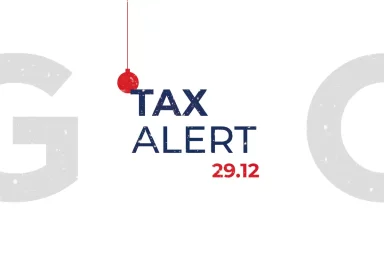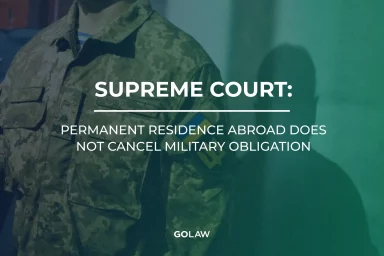Joint liability of directors for company debts: key risks
Risks arising from decisions made by the director or from non-compliance with applicable legislation can have significant financial, reputational and legal consequences for both the company and, in certain cases, the director personally. It is essential to understand the nature of these risks, their sources and methods for mitigating them.
Therefore, a company director, as an official, may incur four main types of liability: civil, disciplinary, administrative and criminal. Each type has specific features determined by the nature of the actions and their degree of risk.
Given the growing focus on directors` personal liability, it is worthwhile to examine in detail a seemingly subtle yet significant legal concept: joint liability. In this context, joint liability is a special form of civil liability whereby the director is liable for the company`s debts, both individually and collectively with the company itself. Its application is based on the director`s inaction, especially when they fail to initiate bankruptcy proceedings within the statutory period after signs of insolvency emerge. The Ukrainian Bankruptcy Code, unlike prior legislation, introduced a new approach: a director may be held jointly liable with the debtor in bankruptcy proceedings if they do not file a petition to commence such proceedings within one month after the legal grounds for insolvency arise. From that moment, the director shall submit an application to the commercial court to open bankruptcy proceedings.
In the context of joint liability, not only the statutory deadlines and formal actions matter, but also the director`s conduct once the company is already at risk of insolvency.
The moment when the threat of insolvency arises is determined by a thorough analysis of the actual circumstances and the debtor`s financial condition. According to the Supreme Court`s case law, the following factors are critical: the existence of overdue debts to at least two creditors, the deadline for fulfilling obligations that has passed, and obvious insufficiency of assets to satisfy those debts. Under such circumstances, the director is obliged to comply with the requirements of bankruptcy law.
Failure to meet this obligation may carry serious consequences. Recent practice, notably in Case No. 911/293/21 and Case No. 904/76/21, demonstrates a consistent approach: if the director does not initiate bankruptcy proceedings within one month after insolvency signs appear, they may be held jointly and severally liable for the company`s debts.
The Supreme Court has affirmed that liability may be imposed on any director who, during their term, fails to petition the court promptly. This liability applies regardless of whether the director holds the position at the time the bankruptcy proceedings are opened. This provision is particularly significant for newly appointed directors who assume leadership of a company already in crisis.
Special attention is also given to the director`s obligation to promptly inform the company`s shareholders (founders) upon detecting insolvency signs. A lack of official communication may be construed as deliberate concealment of the company`s critical financial condition, thereby significantly strengthens creditors’ arguments in their claims to hold the director liable. Courts also consider whether the director took real and effective measures to stabilise the situation such as initiating debt restructuring, negotiating with creditors or optimising expenses.
In prolonged insolvency situations where there is no director intervention, courts may classify such conduct as bad faith, thereby deepening the crisis of the enterprise. Proving the director`s good faith and reasonableness is thus crucial for rebutting the statutory presumption of fault. Conversely, passively watching the company`s financial decline without active steps increases the risk of personal financial sanctions.
In the context of joint liability of the director, judicial practice distinguishes several actions (or inactions) that may indicate dishonest behaviour on the part of a director and become grounds for imposing personal liability on them for the company’s debts. In particular, these include:
- making key management decisions in violation of the principles of good faith and reasonableness, including entering into or approving transactions on deliberately unfavourable terms or with counterparties who are clearly unable to fulfil their obligations (in particular with “shell companies”);
- giving instructions to carry out deliberately unprofitable or economically unjustified transactions;
- appointing persons to management positions whose actions are contrary to the interests of the company;
- creating and maintaining a management model that ensures systematic benefits for third parties to the detriment of the company and its creditors;
- using a document flow that does not reflect actual business transactions;
- organising business activities with the aim of redistributing the total income in favour of related parties, while accumulating a debt burden on the company itself;
- using the debtor’s property in their own interests or in the interests of third parties with disregard for the rights of creditors;
- other actions (or inaction) that contradict the generally accepted principles of good faith in business practice.
Courts assess these actions together with other factors (e.g., absence of stabilisation efforts or failure to petition for bankruptcy) and may serve as an additional ground for joint liability.
Particular attention should be paid to the issue of multiple directors who changed during the period when the company was already in crisis. In case No. 911/293/21, the Supreme Court confirmed the possibility of imposing joint liability on each director who failed to apply to the commencement of proceedings within the specified period. The Court emphasises that the good faith of each director is being assessed separately, taking into account whether they had an objective opportunity to detect signs of insolvency and initiate bankruptcy proceedings.
Thus, joint liability is a mechanism for restoring justice to business creditors. For directors, this means they shall continually monitor their financial position, document their actions in the event of signs of a crisis, and maintain transparency in their communication with shareholders and counterparties. This is the only way to reduce the risks of personal liability for the company`s debts.
Therefore, the director should:
- introduce regular (monthly) financial monitoring of reporting, liquidity and debt control;
- if signs of insolvency are detected, the director is obliged to immediately notify the shareholders and propose to take anti-crisis measures, in particular by attracting additional financing, and record this. In the absence of a response, the company has a deadline to file for bankruptcy in accordance with the law;
- all actions to stabilise the company’s financial position, negotiations with creditors, restructuring, and cost optimisation should be documented;
- a director should refrain from entering into transactions with fictitious counterparties or on knowingly unfavourable terms;
- appoint people to management positions whose activities are in the interests of the business;
- newly appointed directors should be required to provide financial statements or conduct an internal audit;
- it is important to provide legal support for management decisions in crisis situations to minimise personal risks.
To sum up, it is worth emphasising that a late response to a company’s financial instability can be a managerial miscalculation that can result not only in the business’s bankruptcy but also in the director’s personal liability for its debts. During a financial crisis, the director shall respond promptly and effectively. Failing to fulfil this obligation may result in personal property liability for them.

Oleksandr Melnyk
Partner, Head of Corporate Law and M&A practice, Attorney at law
- Contacts
- 31/33 Kniaziv Ostrozkykh St, Zorianyi Business Center, Kyiv, Ukraine, 01010
- o.melnyk@golaw.ua
- +38 044 581 1220
- Recognitions
- Lexology Index: Client Choice 2026
- The Legal 500 2025
- IFLR1000 2025 (International Financial Law Review)
- Legal 500 Green Guide 2024
- 50 Leading Law Firms Ukraine 2026

Oles Riabchuk
Senior Associate, Attorney at Law
- Contacts
- 31/33 Kniaziv Ostrozkykh St, Zorianyi Business Center, Kyiv, Ukraine, 01010
- o.riabchuk@golaw.ua
- +38 044 581 1220
Get in touch
To get a consultation, please fill out the form below or call us right away:Sign up to be aware
New achievements are inspired by information. GO further, don’t miss out GOLAW news and legal alerts
Our expertise
-
- Energy and Natural Resources
- Antitrust and Competition
- Banking and Finance
- Compliance, Corporate Governance and Risk Management
- Corporate and M&A
- Criminal and White Collar Defence
- Defense in Anti-corruption procedures and regulations
- Labor and Employment
- Natural Resources and Environment
- Government Relations (GR)
- Insolvency and Corporate Recovery
- Intellectual property
- International trade
- Legal support of business and private Сlients in Germany
- Litigation and dispute resolution
- Private clients
- Real Estate and Construction
- Restructuring, Claims and Recoveries
- Martial Law
- Tax and Customs
-
- Agribusiness
- Aviation
- Chemical industry
- Engineering, Construction and Building Materials
- Environment and Natural Resources
- Financial institutions
- IT and AI
- Industry and manufacturing
- Healthcare industries, Life sciences and Pharmaceuticals
- Media, Entertainment, Sports and Gambling
- Retail, FMCG and E-Commerce
- Transport and Logistics
We use cookies to improve performance of our website and your user experience.
Cookies policy
Cookies settings








